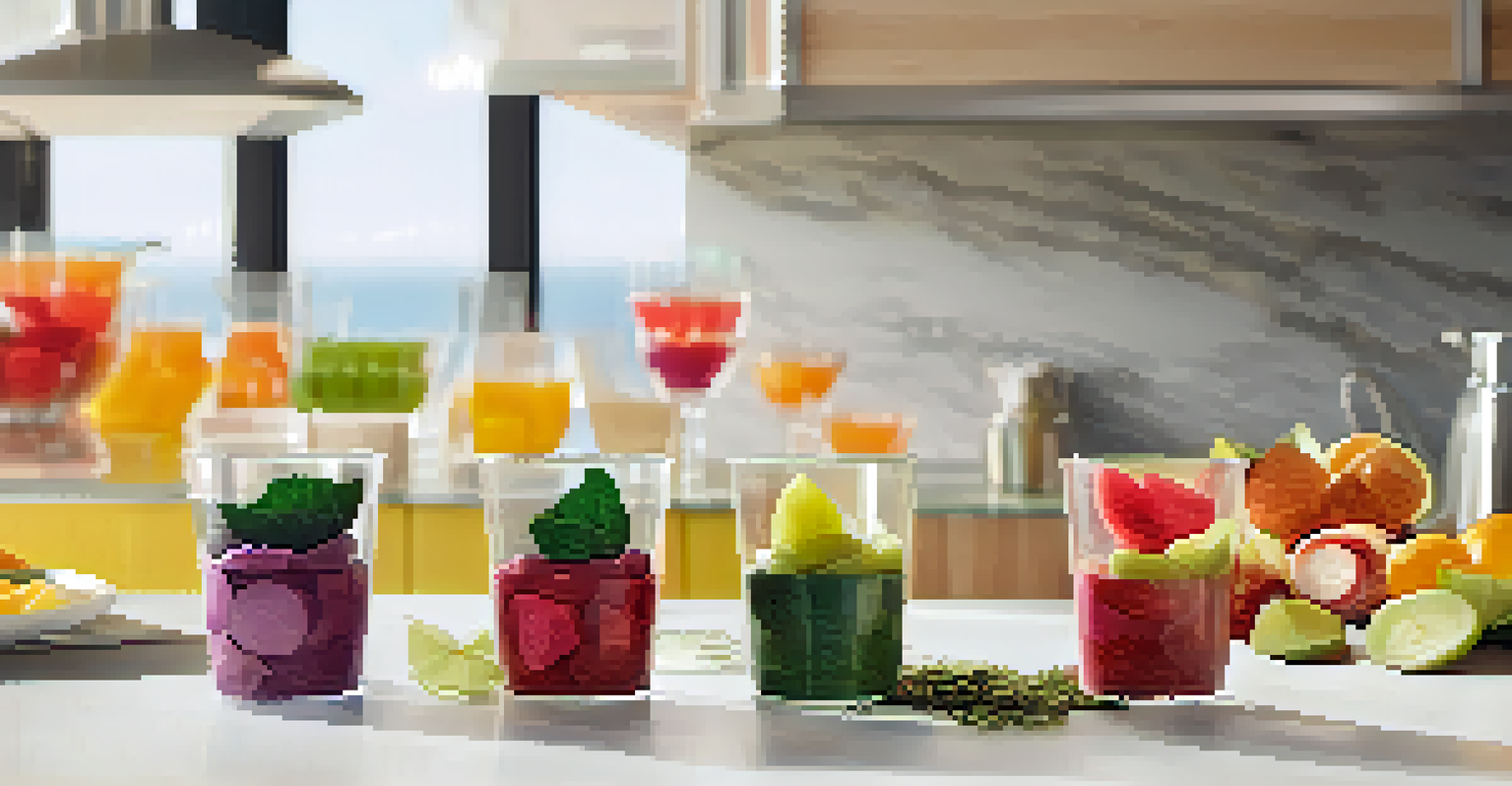Sustainable Packaging Innovations for Eco-Conscious Brands

Understanding Sustainable Packaging and Its Importance
Sustainable packaging refers to materials and processes that have a minimal impact on the environment. This includes reducing waste, utilizing renewable resources, and promoting recyclability. As consumers become increasingly eco-conscious, brands are recognizing the importance of sustainable packaging in their overall strategy.
The greatest threat to our planet is the belief that someone else will save it.
By choosing sustainable packaging, businesses not only help protect the planet but also enhance their brand image. Shoppers are more likely to support companies that prioritize environmental responsibility, leading to increased loyalty and sales. In this age of information, transparency about packaging choices can set a brand apart from its competitors.
Moreover, sustainable packaging often aligns with circular economy principles, where materials are reused or recycled, minimizing waste. This shift not only supports environmental goals but also opens doors to innovative materials and designs that can further engage consumers.
Biodegradable Materials: A Game Changer
Biodegradable materials, such as plant-based plastics, are revolutionizing the packaging industry. These materials break down naturally over time, reducing landfill waste and pollution. For brands, opting for biodegradable options can enhance their eco-friendly image and appeal to environmentally conscious consumers.

For example, companies like Coca-Cola have begun exploring biodegradable bottles made from plant materials. This innovation demonstrates a commitment to sustainability while maintaining the functionality that consumers expect. By highlighting such initiatives, brands can effectively communicate their dedication to reducing their environmental footprint.
Sustainable Packaging Matters
Sustainable packaging reduces environmental impact and enhances brand loyalty among eco-conscious consumers.
However, it's essential to educate consumers about proper disposal methods for biodegradable packaging. Many people are unaware that these materials require specific conditions to decompose effectively. Clear labeling and consumer education can maximize the benefits of biodegradable packaging.
Recyclable Packaging: Closing the Loop
Recyclable packaging plays a critical role in promoting a circular economy. By designing packaging that can be easily recycled, brands contribute to reducing waste and conserving resources. This approach not only benefits the environment but also resonates with consumers who prioritize sustainability.
Sustainability is no longer about doing less harm. It's about doing more good.
Take Unilever, for instance; they have committed to making all their plastic packaging recyclable, reusable, or compostable by 2025. Such initiatives not only help reduce plastic waste but also set a benchmark for other companies to follow. When brands take the lead in adopting recyclable practices, they encourage industry-wide change.
Additionally, it's crucial for brands to ensure that their recyclable packaging is clearly labeled. Confusion over what can or cannot be recycled often leads to contamination in recycling streams. By providing guidance, brands can empower consumers to make more sustainable choices.
Innovative Designs: Function Meets Sustainability
Sustainable packaging isn't just about the materials used; it's also about innovative design. Creative packaging solutions can minimize material usage while maximizing functionality. Brands that prioritize design can offer consumers an engaging unboxing experience without compromising sustainability.
For instance, companies like Apple have embraced minimalist packaging designs that use less material while still providing protection for their products. This approach not only reduces waste but also appeals to consumers who appreciate aesthetics and functionality. Effective design can make sustainable packaging more attractive and relevant.
Biodegradable Options Lead Change
The adoption of biodegradable materials, like plant-based plastics, is transforming packaging practices to support sustainability.
Brands should also consider multi-functional packaging that can be reused or repurposed, adding value beyond its initial use. By thinking outside the box, brands can create packaging that resonates with eco-conscious consumers and enhances brand loyalty.
The Rise of Edible Packaging: A Bold Solution
Edible packaging is one of the most innovative trends in sustainable packaging. This concept involves creating packaging from food-grade materials that can be consumed along with the product. While still in its nascent stages, edible packaging represents a bold step towards eliminating waste altogether.
A great example is Loliware, which produces edible cups made from seaweed. These cups not only serve their purpose but also provide a tasty treat after use. Such innovations can capture consumer interest and create memorable experiences that align with eco-conscious values.
However, challenges remain in terms of scalability and consumer acceptance. As more brands experiment with edible packaging, education and marketing will be crucial in helping consumers embrace this exciting new option.
Sourcing Local: Reducing Carbon Footprint
Sourcing packaging materials locally is a powerful way for brands to reduce their carbon footprint. By minimizing the distance materials travel, companies can cut down on transportation emissions and support local economies. This approach not only benefits the environment but also strengthens community ties.
Brands like Allbirds have successfully implemented local sourcing for their packaging, showcasing their commitment to sustainability. This strategy not only reduces environmental impact but also resonates with consumers who value local businesses. Supporting local suppliers can also lead to unique packaging solutions that reflect regional characteristics.
Engaging Consumers Drives Success
Educating and involving consumers in sustainability initiatives fosters loyalty and encourages eco-friendly choices.
Additionally, local sourcing can enhance supply chain resilience. By relying on nearby suppliers, brands can adapt more quickly to changes in demand and reduce the risks associated with global supply chains.
Consumer Engagement: The Key to Success
Engaging consumers in the sustainability journey is essential for brands aiming to innovate their packaging. By educating customers about the benefits of sustainable packaging, brands can create a loyal following. This can be achieved through transparent communication and storytelling around packaging choices.
For instance, brands can share the journey of their packaging from design to disposal, highlighting the steps taken to minimize environmental impact. Engaging campaigns that encourage consumers to participate in recycling or return programs can also foster a sense of community and responsibility.

Furthermore, social media platforms offer a great avenue for brands to showcase their sustainable packaging initiatives. By sharing user-generated content and feedback, brands can build a stronger connection with their audience and inspire them to make more eco-friendly choices.